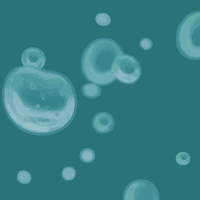Topic Menu
► Topic MenuTopic Editors


Modelling and Characterization of Soft and Supersoft Materials
Topic Information
Dear Colleagues,
Soft and supersoft materials undergo large deformations at relatively low stresses and recover their initial shape upon removal of the load. Underlying flexible long chain molecules contribute to their extraordinary elastic behavior. Over the years, numerous phenomenological and micromechanical models have been developed to capture their complex mechanical behavior. Thus, the aim of this Collection is to serve as a balanced, informative, and critical framework summarizing the latest breakthroughs in the field of rubbers, elastomers, hydrogels, and other soft and supersoft materials. This Topic includes numerical and experimental studies of:
- Rubber composites;
- Hydrogels;
- Soft materials;
- Structure and properties relationship;
- Advanced rubbery materials;
- Tissue engineering;
- Bioprinting.
Dr. Aleksander Czekanski
Dr. Cuiying Jian
Topic Editors
Keywords
- numerical modeling
- experimental mechanics
- bioprinting
- elastomers
- constitutive modeling
Participating Journals
| Journal Name | Impact Factor | CiteScore | Launched Year | First Decision (median) | APC |
|---|---|---|---|---|---|

Applied Sciences
|
2.5 | 5.3 | 2011 | 17.8 Days | CHF 2400 |

Gels
|
5.0 | 4.7 | 2015 | 10.9 Days | CHF 2100 |

Materials
|
3.1 | 5.8 | 2008 | 15.5 Days | CHF 2600 |

Molecules
|
4.2 | 7.4 | 1996 | 15.1 Days | CHF 2700 |

Nanomaterials
|
4.4 | 8.5 | 2010 | 13.8 Days | CHF 2900 |

MDPI Topics is cooperating with Preprints.org and has built a direct connection between MDPI journals and Preprints.org. Authors are encouraged to enjoy the benefits by posting a preprint at Preprints.org prior to publication:
- Immediately share your ideas ahead of publication and establish your research priority;
- Protect your idea from being stolen with this time-stamped preprint article;
- Enhance the exposure and impact of your research;
- Receive feedback from your peers in advance;
- Have it indexed in Web of Science (Preprint Citation Index), Google Scholar, Crossref, SHARE, PrePubMed, Scilit and Europe PMC.

